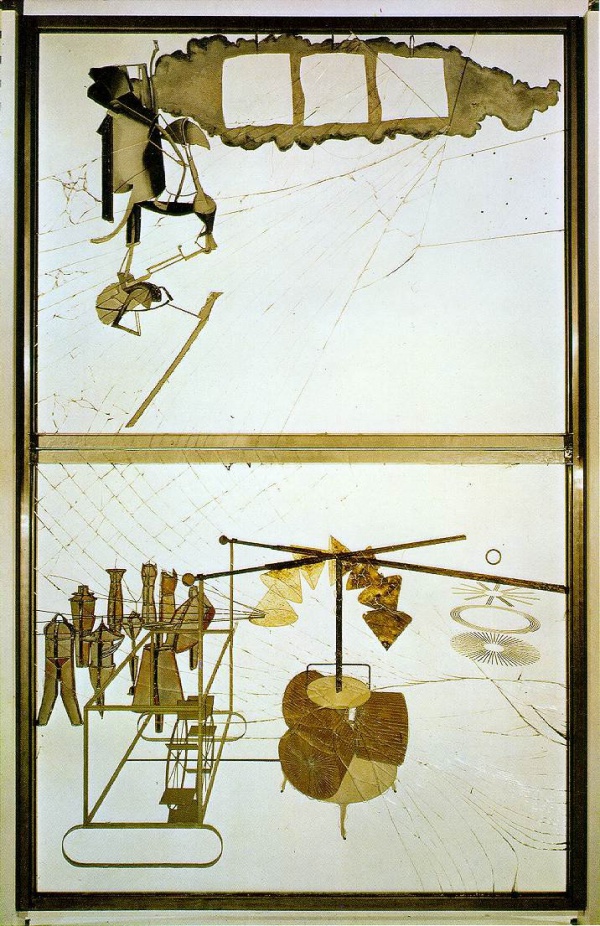Facts About The Bride Stripped Bare by Her Bachelors, Even
Marcel Duchamp's "The Bride Stripped Bare by Her Bachelors, Even" commonly known as "The Large Glass" ranks among the most captivating pieces of modern art. Duchamp dedicated himself to this masterpiece from 1915 to 1923, meticulously crafting it using two large glass panels and a variety of materials, including lead foil, fuse wire, and even dust. Standing over 9 feet tall, this freestanding artwork is a testament to Duchamp's meticulous attention to detail, his innovative use of chance procedures, and his sophisticated perspective studies.
"The Large Glass" is an enigmatic puzzle, featuring the "Bride" in the upper panel and her nine "Bachelors" in the lower panel, all interwoven with mysterious mechanical devices. Duchamp intended for the artwork to be accompanied by a book titled "The Green Box" which would guide viewers through its complexities and encourage a deeper engagement beyond mere superficial observation. Although initially perplexing, the artwork is rich in symbolism and boasts a style that defies easy categorization.
First exhibited in 1926 at the Brooklyn Museum, "The Large Glass" sustained damage during transport but was meticulously repaired by Duchamp himself. Today, it resides in the Philadelphia Museum of Art, while replicas exist in museums in Stockholm, London, and at the University of Tokyo.
Visually, "The Large Glass" is a feast for the eyes. The top panel, known as the Bride's Domain, and the bottom panel, the Bachelors' Apparatus, are replete with geometric shapes outlined in lead wire and painted in earthy tones. The colors vary from pale grey to gold to dark brown and black, with elements such as a chocolate grinder and interconnected mechanical forms adding layers of complexity to the piece.
Duchamp's creative process for "The Large Glass" was far from conventional. He embraced elements of chance and experimentation, making the artwork open to multiple interpretations. Critics have delved into themes of desire, suffering, and the interplay between male and female energies within the piece. Some have even drawn connections to playful or Victorian physics and literary works like Kafka's "In the Penal Colony" and Jarry's "Supermale."

 Mexico
Mexico